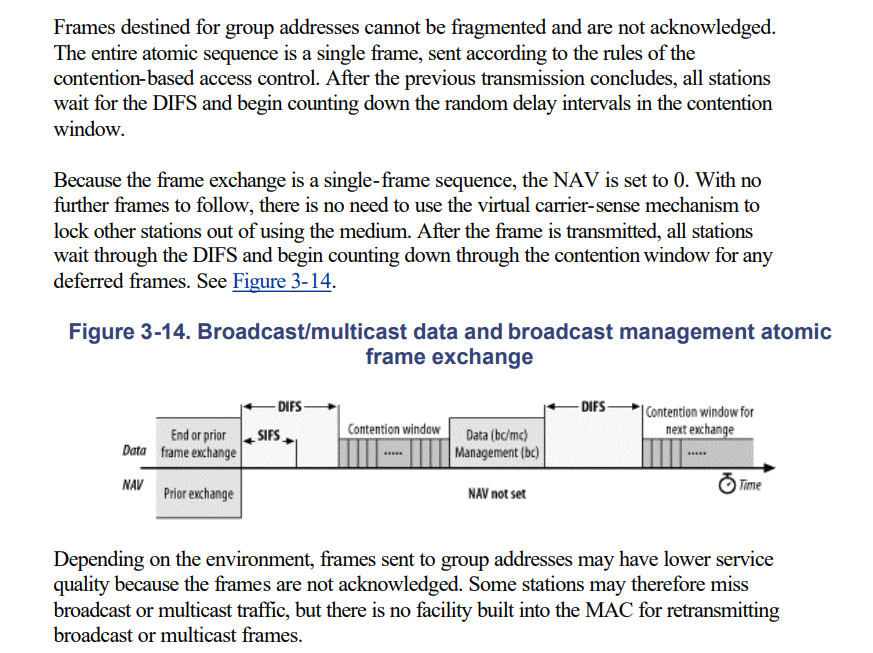802.11 Unicast, Broadcast, Multicast, Management Frames - LogeshVel/802.11 GitHub Wiki
Unicast Frames
Basic positive acknowledgment
Reliable transmission between two stations is based on simple positive acknowledgments. Unicast data frames must be acknowledged, or the frame is assumed to be lost.
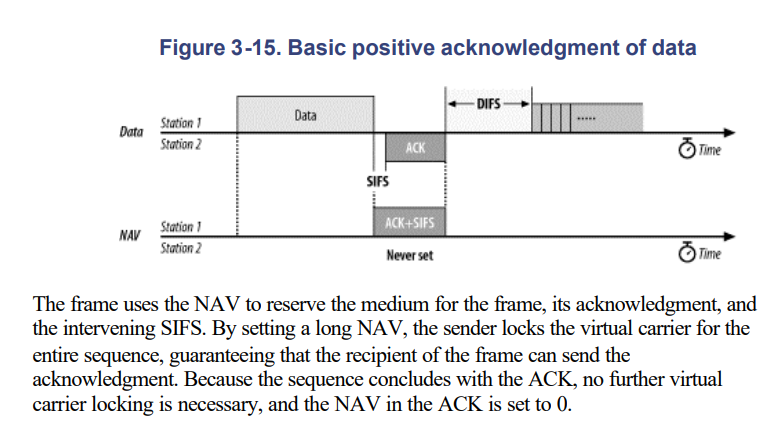
Fragmentation
Many higher-layer network protocols, including IP, incorporate fragmentation. The disadvantage of network-layer fragmentation is that reassembly is performed by the final destination; if any of the fragments are lost, the entire packet must be retransmitted. Link layers may incorporate fragmentation to boost speed over a single hop with a small MTU.
802.11 can also use fragmentation to help avoid interference. Radio interference is often in the form of short, high-energy bursts and is frequently synchronized with the AC power line. Breaking a large frame into small frames allows a larger percentage of the frames to arrive undamaged.
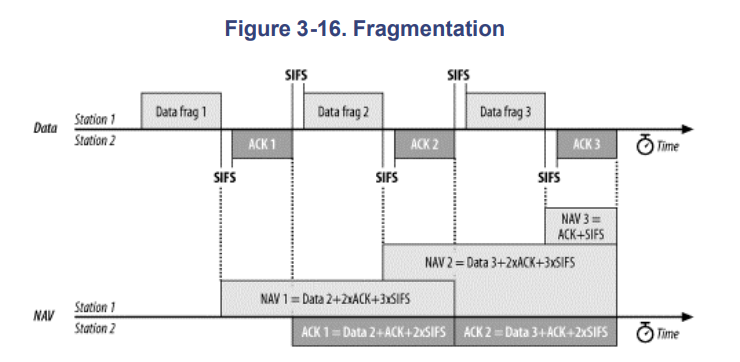
The last two frames exchanged are the same as in the previous sequence, and the NAV is set identically. However, all previous frames use the NAV to lock the medium for the next frame. The first data frame sets the NAV for a long enough period to accommodate its ACK, the next fragment, and the acknowledgment following the next fragment. To indicate that it is a fragment, the MAC sets the More Fragments bit in the frame control field to 1
All nonfinal ACKs continue to extend the lock for the next data fragment and its ACK. Subsequent data frames then continue to lengthen the NAV to include successive acknowledgments until the final data frame, which sets the More Fragments bit to 0, and the final ACK, which sets the NAV to 0. No limit is placed on the number of fragments, but the total frame length must be shorter than any constraint placed on the exchange by the PHY.

RTS/CTS
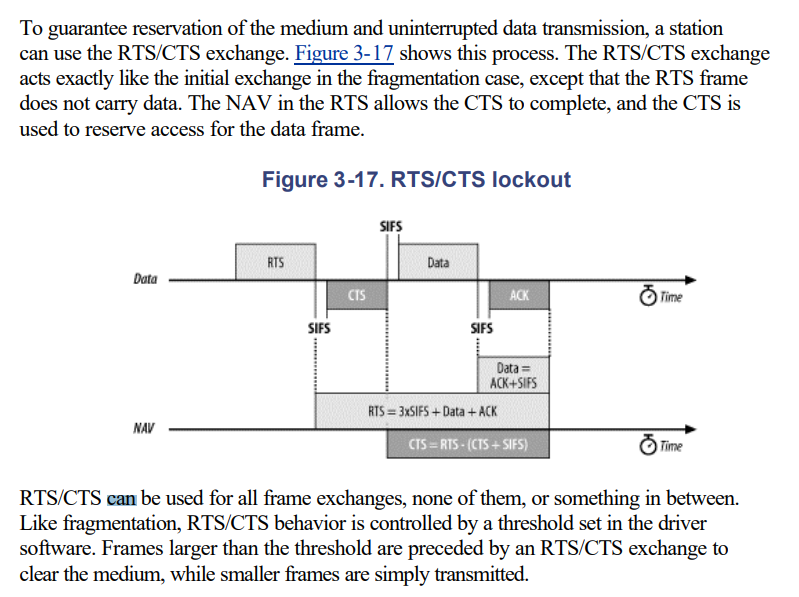
RTS/CTS with fragmentation
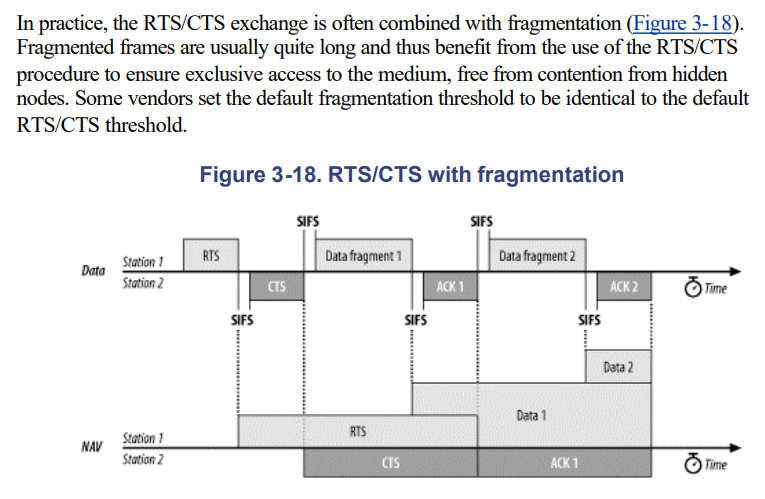
Broadcast, multicast, management frames
Broadcast and multicast frames have the simplest frame exchanges because there is no acknowledgment. Framing and addressing are somewhat more complex in 802.11, so the types of frames that match this rule are the following:
- Broadcast data frames with a broadcast address in the Address1 field
- Multicast data frames with a multicast address in the Address1 field
- Broadcast management frames with a broadcast address in the Address1 field (Beacon, Probe Request, and IBSS ATIM frames)
